The futuristic gadgets unveiled at CES 2024 that give a glimpse into your future life – from completely transparent TVs to gym leggings that will ZAP you to get fit
If you’ve ever seen an ’80s sci-fi movie, you know that predicting the future of technology is never an easy task.
But at CES 2024, some fantastic gadgets offer a glimpse into your future life.
And from transparent TVs and flying cars to gym leggings that you can fit into, that future looks more like science fiction than ever.
With ChatGPT exploding into our lives last year, it’s no surprise that CES saw more than its fair share of useful AI devices.
So whether you’re looking for a robot butler or an AI personal trainer, there may soon be a gadget that has just what you need.
Transparent TVs
One of the most exciting developments of CES 2024 is LG and Samsung’s announcement of fully transparent televisions.
In what it believes could be the next big breakthrough in television, the South Korean electronics manufacturer unveiled its wireless see-through device on Monday.
At the conference in Las Vegas, the company released a 77-inch wireless display.
Billed as ‘the world’s first 4K, wireless, transparent OLED TV’, the LG Signature OLED-T is built to sit in the middle of a room and look like a translucent pane of glass when not in use is.
When enabled, viewers can choose to keep it partially transparent or make it opaque.
“OLED T creates a feeling of openness,” says LG’s Frank Lee.
‘The TV no longer has to dominate the room. This strengthens the relationship between the TV and the space it occupies.’
LG unveiled the 77-inch wireless display on stage during a press conference on Monday morning
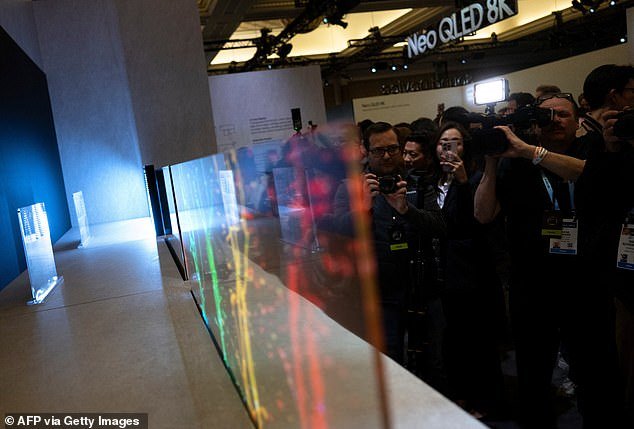
The wireless and transparent TV is not yet ready for public release, but is heralded as the future of television
Gym leggings that will shock you
While most gadgets aim to make your life more comfortable, some of the technology on display at CES 2024 seems to have the opposite goal.
Although Barunbio Energywear’s workout clothes look like average gym clothes, they actually hide a surprising piece of technology.
The WE-Stim equipment (for wearable electrical stimulation) provides low-power electrical stimulation over your entire body while you exercise.
However, no batteries are required: the clothing uses the static electricity generated by your own movements for energy.
“It improves cell vitalization, signaling, metabolic activity and blood flow, inducing movement of ions and molecules within cells,” the company explains.
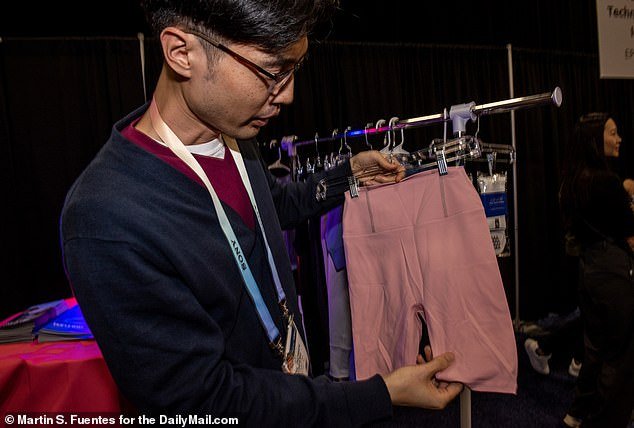
WE-Stim clothing is designed to deliver small electric shocks along the seams that claim to improve muscle performance
Robot butlers
Not one but two different robot butlers were launched at this year’s CES.
Both Samsung and LG have unveiled AI robot assistants that can feed your pets, schedule laundry and remind you to take medications.
Samsung’s offering, a new version of its Ballie robot, is a round yellow robot that includes AI-powered camera hardware and a projector.
According to Samsung, it can recognize your face and greet you when you come home.
A promotional video shows how you can send the robot a text message to tell it to look at the dog.
It can even project video calls, training or other work or entertainment images onto the wall.
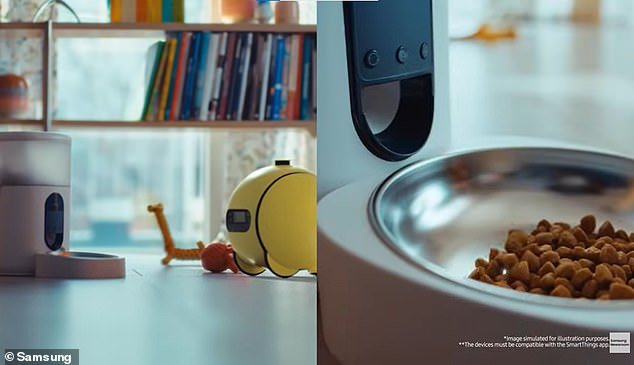
When connected to other smart home devices, Samsung says, Ballie can activate them, allowing the robot to feed your pets or turn on the laundry
This week also saw the release of LG’s rival robot, which the company calls its “smart home agent.”
This AI assistant looks much more like a small animal, with a digital screen for a face and legs with wheels.
The robot is designed to follow you around the house and perform small, information-based chores.
It won’t be able to do laundry or dishes, but LG says it can learn your mood and habits.
This may include encouraging the owner to play upbeat music when he or she is feeling sad.
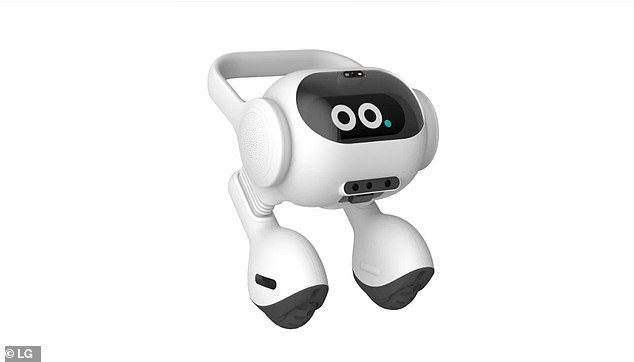
This week also saw the release of LG’s rival robot, which the company calls its “smart home agent.”
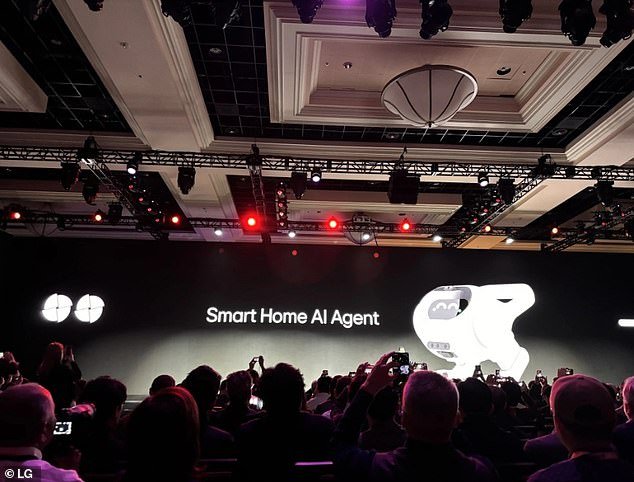
LG announced its smart home AI agent during a press conference at CES in Las Vegas this week, but it is not yet available to the public
Virtual laptop with a 100 inch screen
While other companies have focused on making their screens bigger and better, one company has done away with them altogether.
The Spacetop, made by startup Sightful, promises users a 100-inch screen without the inconvenience of physical hardware.
By using augmented reality glasses, the laptop user can see a large screen in front of them as if it were floating in the air.
But at $2,150 (£1,690), the Spacetop has a lot to live up to.
And while the laptop’s display may be innovative, the laptop itself may be held back by subpar hardware.
The system is powered by a Qualcomm Snapdragon XR2 chip, the same chip that Meta used for the Quest 2 in 2020.
It also only has 8GB of RAM and 256GB of storage, a far cry from what you could get from a normal laptop for a similar price.

Sightful’s Spacetop uses augmented reality glasses to give the user a 100-inch screen without the need for a physical screen
An AI assistant in your pocket
A walkie-talkie-style gadget is already being hailed as the “iPhone of artificial intelligence.”
The Rabbit r1 uses a built-in chatbot to perform daily tasks for the owner.
According to the company, these tasks can be anything from a simple question to booking an entire vacation.
The r1, unveiled this week at CES 2024, marked the start of the race to create a device that will do for AI what the smartphone did for the internet.
What’s more, it costs just £159 – a fraction of the price of competing devices, including Humane’s AI Pin, which recently went on sale for £550.
The idea behind it is to prevent people from having to scroll through hundreds of different apps on their smartphones – and instead offer one big super app.
The gadget works by monitoring all of its owner’s online accounts, giving the AI access to their profiles on apps like Uber and Deliveroo.
However, US start-up Rabbit said it would always seek permission and clarification when carrying out any task, especially when it comes to payments.
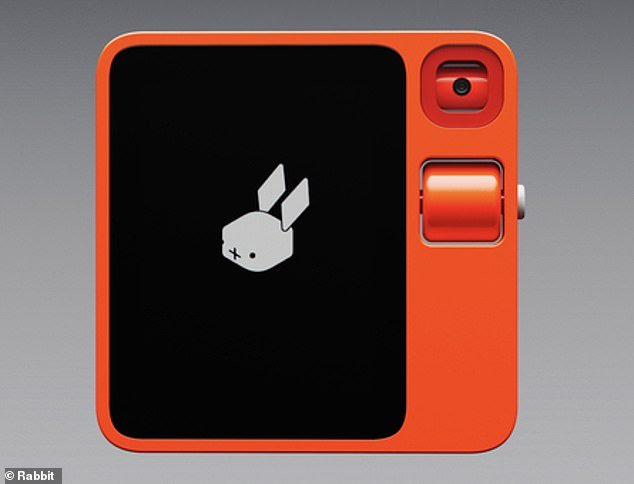
The Rabbit r1 is a walkie-talkie-style gadget with a built-in chatbot that’s already being hailed as the ‘iPhone of artificial intelligence’
Creepy robot friend
Rounding out this year’s selection of AI assistants is the somewhat bizarre human face of WeHead.
Billed as the ‘AI companion with a human face’, the company uses a set mix of screens to create a compelling face for users to talk to.
At CES 2024, MailOnline spoke to a WeHead device programmed to deliver a company pitch, but the company says they could be used for customer service.
However, MailOnline discovered that the AI regularly interrupted the user and gave confusing answers.
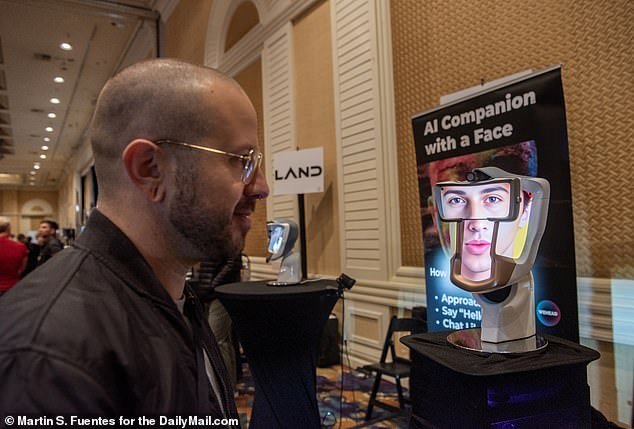
MailOnline tried to talk to the WeHead device, but it kept calling the user “bro,” which it said was a term of endearment
Flying cars
Of course, no collection of futuristic technology would be complete without at least one flying car.
Several flying vehicles were launched at CES 2024, but perhaps the most exciting is the new S-A2 from Hyundai-owned Supernal.
Once put into service, the S-A2 will move people around the city and avoid traffic congestion.
This electric vertical take-off and landing vehicle is aiming for approval by 2026 as one of the very first flying taxis in the US.
The vehicle seats five people (a pilot and four passengers) and gets its power from eight electric rotors.
During flight, all eight rotors rotate forward, allowing the vehicle to fly like an airplane.
Neil Marshall, head of manufacturing strategy at Supernal, told MailOnline: ‘Our aim is to get to that cost point where it is affordable and the masses can use it.
“This is not intended to be solely focused on using wealthy people or managers.”
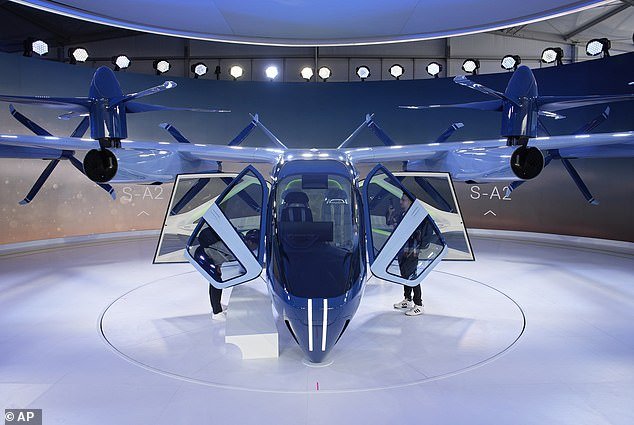
The S-A2 electric vertical take-off and landing (eVTOL) seeks approval in 2026 to become one of America’s first flying taxis
